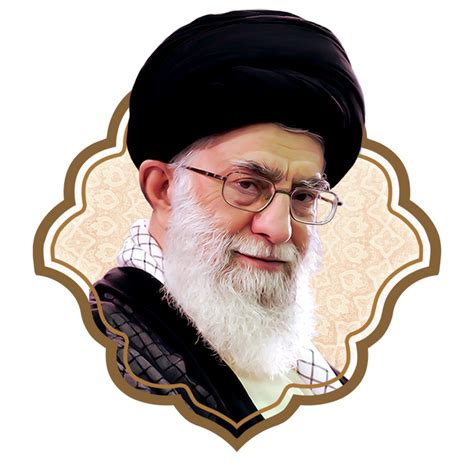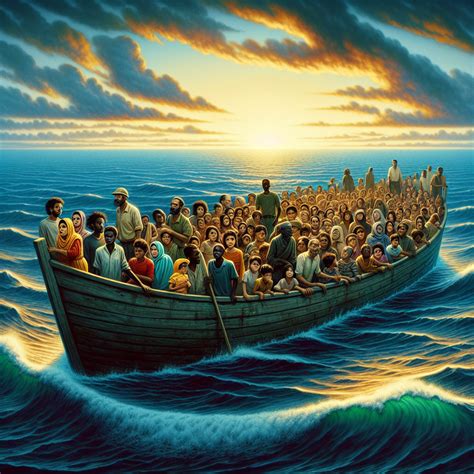
Ali Khamenei, Iran’s Supreme Leader, faces mounting internal and external pressures amid economic hardship, social unrest, and regional instability, testing his decades-long grip on power despite his unwavering commitment to the Islamic Republic’s revolutionary ideals and his ruthless suppression of dissent.
Ali Khamenei, who has served as Iran’s Supreme Leader since 1989, stands at a critical juncture as his nation grapples with a confluence of challenges. From a teetering economy exacerbated by international sanctions to simmering social discontent fueled by restricted freedoms and a lack of opportunities, Khamenei’s leadership is being tested on multiple fronts. Externally, Iran remains embroiled in regional conflicts and faces persistent threats from adversaries, particularly Israel and the United States. Despite these pressures, Khamenei remains steadfast in his defense of the Islamic Republic’s revolutionary principles, demonstrating an iron will to maintain control and quash any perceived threats to the regime.
Khamenei’s rise to power followed the death of Ayatollah Ruhollah Khomeini, the founder of the Islamic Republic. While Khomeini possessed undeniable charisma and revolutionary fervor, Khamenei, initially seen as a compromise candidate, has consolidated his authority over the past three decades. He has cultivated a loyal following within the military, the judiciary, and the vast network of religious institutions that underpin the regime. His supporters view him as a wise and principled leader who has safeguarded Iran’s independence and resisted Western influence.
However, critics paint a different picture, portraying Khamenei as an autocratic ruler who has stifled dissent, suppressed human rights, and overseen the mismanagement of the economy. They point to the violent crackdown on protests in recent years, the widespread use of surveillance technology, and the pervasive censorship that stifles any form of opposition. The economic situation in Iran has deteriorated significantly under Khamenei’s leadership, with high inflation, unemployment, and a widening gap between the rich and the poor. “The economy is certainly a major challenge for the Iranian government,” stated a report from the International Crisis Group, highlighting the dire straits many Iranians find themselves in.
The Supreme Leader’s health has also been a subject of speculation. While Iranian state media routinely portrays him as vigorous and engaged, rumors of serious illness have circulated for years. His eventual successor will face the daunting task of navigating Iran’s complex political landscape and addressing the deep-seated grievances of its population. Possible candidates include Khamenei’s son, Mojtaba, although his succession could be controversial, potentially triggering a power struggle within the ruling elite.
The social unrest in Iran stems from a variety of factors. Economic grievances are paramount, but they are compounded by restrictions on personal freedoms, limited opportunities for young people, and a pervasive sense of social injustice. The government’s heavy-handed response to protests has only fueled further anger and resentment. The death of Mahsa Amini in September 2022, after being arrested by morality police for allegedly violating the country’s dress code, sparked nationwide protests that shook the foundations of the Islamic Republic. The protests, which were met with brutal force by security forces, highlighted the deep chasm between the regime and a significant portion of the population, particularly young people and women.
Internationally, Iran remains a pariah state in the eyes of many. Its nuclear program, its support for proxy groups in the Middle East, and its human rights record have drawn condemnation from the United States, Europe, and other countries. The reimposition of sanctions by the Trump administration in 2018, after the U.S. withdrawal from the Iran nuclear deal, has crippled the Iranian economy and further isolated the country. Efforts to revive the nuclear deal have stalled, leaving Iran on a path towards potential nuclear weapons capability, a prospect that has alarmed its regional rivals, particularly Israel and Saudi Arabia.
Khamenei’s foreign policy is driven by a desire to project Iranian power and influence in the region and to challenge the dominance of the United States and its allies. Iran provides support to Hezbollah in Lebanon, Hamas in Palestine, and various Shia militias in Iraq and Syria. These groups serve as proxies for Iran, allowing it to exert influence in these countries without directly engaging in military conflict. Iran’s involvement in regional conflicts has further strained its relations with its neighbors and has contributed to the ongoing instability in the Middle East.
Despite the challenges he faces, Khamenei remains a formidable figure. He has demonstrated a remarkable ability to maintain control over the levers of power and to suppress any perceived threats to the regime. His supporters within the security apparatus and the religious establishment remain fiercely loyal, and he has shown no willingness to compromise on the fundamental principles of the Islamic Republic. However, the long-term stability of the regime remains uncertain. The economic hardship, social unrest, and international isolation that Iran faces pose significant challenges to Khamenei’s leadership, and the question of his succession looms large. “The next few years will be critical in determining the future of Iran,” stated a Middle East analyst at the Council on Foreign Relations, highlighting the uncertain path ahead.
Khamenei’s legacy will be defined by his unwavering commitment to the Islamic Republic, his resistance to Western influence, and his ruthless suppression of dissent. Whether he will be remembered as a defender of Iran’s independence or as an autocratic ruler who stifled its potential remains to be seen. The future of Iran hinges on the decisions that Khamenei and his successors make in the years to come. The internal and external pressures on Iran are unlikely to dissipate anytime soon, and the country faces a period of profound uncertainty. How Khamenei navigates these challenges will determine not only his own legacy but also the future of Iran and the stability of the Middle East. The Supreme Leader’s actions in the coming years will shape the course of Iranian history and have far-reaching consequences for the region and the world.
The economic sanctions imposed by the U.S. have severely impacted Iran’s oil exports, which are a crucial source of revenue. These sanctions have also limited Iran’s access to international financial markets and have made it difficult for Iranian businesses to trade with other countries. As a result, Iran’s economy has contracted sharply, and unemployment and inflation have soared. The Iranian government has struggled to address these economic challenges, and public discontent has grown. The protests that erupted in 2022 were fueled in part by economic grievances, highlighting the government’s failure to provide economic opportunities and improve living standards.
The social restrictions imposed by the Iranian government have also contributed to the unrest. Women in Iran are required to adhere to a strict dress code, and their freedom of movement is limited. The government also restricts freedom of speech, assembly, and the press. These restrictions have stifled dissent and have created a climate of fear. Many Iranians, particularly young people, feel that their basic rights are being violated and that they have no voice in their government. The death of Mahsa Amini served as a catalyst for widespread protests against these social restrictions.
Iran’s regional policies have also drawn criticism from many countries. Iran’s support for proxy groups in the Middle East has fueled conflicts and has destabilized the region. Iran’s nuclear program has raised concerns about its intentions and has led to international sanctions. Iran’s relations with its neighbors, particularly Saudi Arabia and Israel, are strained, and there is a risk of further escalation. The international community has called on Iran to change its regional policies and to engage in constructive dialogue.
Khamenei’s leadership has been marked by a deep distrust of the West, particularly the United States. He views the U.S. as an imperialist power that seeks to undermine the Islamic Republic. He has consistently opposed any attempts to normalize relations with the U.S. and has accused the U.S. of meddling in Iran’s internal affairs. This distrust of the West has shaped Iran’s foreign policy and has contributed to its isolation on the international stage. Khamenei believes that Iran must resist Western influence and maintain its independence in order to preserve its Islamic identity and its revolutionary principles.
The question of Khamenei’s succession remains a major uncertainty. There is no clear successor in place, and the process of selecting a new Supreme Leader could be contentious. Several potential candidates have been mentioned, including Khamenei’s son, Mojtaba. However, his succession could be controversial, as it would be seen by some as a move towards hereditary rule, which would contradict the principles of the Islamic Republic. The selection of a new Supreme Leader will be a crucial moment in Iran’s history, and it could have a significant impact on the country’s future. The next Supreme Leader will face the daunting task of addressing Iran’s internal and external challenges and of maintaining the stability of the regime.
Despite the challenges he faces, Khamenei remains a powerful figure in Iran. He has the support of the security forces, the judiciary, and a large segment of the population. He is a skilled political operator who has been able to navigate the complex dynamics of Iranian politics for over three decades. However, his grip on power is not absolute, and he faces growing opposition from within the country. The economic hardship, social unrest, and international isolation that Iran faces are putting increasing pressure on his leadership, and the question of his succession looms large. The future of Iran is uncertain, but it is clear that Khamenei’s legacy will be defined by his actions in the years to come.
Khamenei’s influence extends far beyond the political realm. He is also the spiritual leader of Iran’s Shia Muslims, and his pronouncements on religious matters carry significant weight. He is a staunch defender of traditional Islamic values and has opposed any attempts to liberalize Iranian society. His conservative social views have alienated some segments of the population, particularly young people and women, who are calling for greater freedoms and opportunities.
The Supreme Leader’s control over the media is absolute. All newspapers, television stations, and websites are subject to censorship, and any criticism of the government is strictly prohibited. This control over the media allows the government to shape public opinion and to suppress dissent. However, the rise of social media has made it more difficult for the government to control the flow of information, and many Iranians are using social media to express their views and to organize protests.
Khamenei’s relationship with the Iranian military is also crucial to his grip on power. The Islamic Revolutionary Guard Corps (IRGC) is a powerful military organization that is loyal to the Supreme Leader. The IRGC plays a key role in maintaining internal security and in projecting Iranian power in the region. Khamenei relies on the IRGC to suppress dissent and to protect the regime from its enemies. The IRGC’s influence extends far beyond the military realm, as it also controls a vast network of economic enterprises.
The sanctions imposed on Iran have not only damaged the economy but have also had a significant impact on the lives of ordinary Iranians. Many Iranians are struggling to make ends meet, and access to basic goods and services is becoming increasingly difficult. The sanctions have also made it difficult for Iranians to travel abroad and to participate in the global economy. The Iranian government has accused the U.S. of deliberately targeting the Iranian people with its sanctions, and it has called on the international community to condemn the U.S. policy.
Despite the challenges he faces, Khamenei remains defiant. He has vowed to resist Western pressure and to defend the Islamic Republic against its enemies. He has called on Iranians to remain united and to support the government in its efforts to overcome the country’s challenges. He believes that Iran will emerge stronger from this period of adversity and that it will continue to play a leading role in the region and the world.
The potential for further escalation in the Middle East remains a serious concern. Iran’s relations with its neighbors are strained, and there is a risk of military conflict. Iran’s nuclear program is a major source of tension, and the failure to revive the nuclear deal has increased the risk of a nuclear arms race in the region. The international community must work to de-escalate tensions and to find a peaceful solution to the conflicts in the Middle East.
Khamenei’s legacy will be debated for years to come. Some will remember him as a defender of Iran’s independence and a champion of Islamic values. Others will criticize him for his autocratic rule, his suppression of human rights, and his support for terrorism. Ultimately, his legacy will depend on the future of Iran and the impact of his policies on the country and the region. The challenges that Iran faces are immense, and the decisions that Khamenei and his successors make in the years to come will determine the fate of the Islamic Republic.
The internal divisions within Iranian society are also a significant challenge to Khamenei’s leadership. There is a deep divide between conservatives and reformists, and there are also divisions along ethnic and religious lines. These divisions make it difficult for the government to unite the country behind a common agenda. The government’s heavy-handed response to dissent has only exacerbated these divisions, and there is a risk of further instability.
The role of religion in Iranian society is also a source of contention. Some Iranians believe that the government should be more secular, while others believe that it should adhere more strictly to Islamic principles. This debate over the role of religion is a major factor in Iranian politics, and it has contributed to the social and political unrest in the country. Khamenei is a staunch defender of the Islamic Republic’s religious foundations, and he has opposed any attempts to weaken the role of religion in Iranian society.
The impact of climate change on Iran is also a growing concern. Iran is facing severe water shortages, and droughts are becoming more frequent and intense. These environmental challenges are exacerbating the economic problems that Iran faces, and they are contributing to social unrest. The Iranian government has been slow to address the challenges of climate change, and its policies have been criticized by environmental activists.
The future of Iran is uncertain, but it is clear that the country faces a number of significant challenges. Khamenei’s leadership is being tested on multiple fronts, and the question of his succession looms large. The economic hardship, social unrest, international isolation, and internal divisions that Iran faces are putting increasing pressure on his regime. The decisions that Khamenei and his successors make in the years to come will determine the fate of the Islamic Republic and the stability of the Middle East.
FAQ Section:
-
What are the main challenges facing Ali Khamenei as Iran’s Supreme Leader?
Khamenei faces a multitude of challenges including a struggling economy impacted by international sanctions, widespread social discontent stemming from restricted freedoms, regional instability due to Iran’s involvement in conflicts, and concerns about his health and eventual succession. As the article stated, “The economy is certainly a major challenge for the Iranian government,” highlighting the economic pressures, while social unrest is fueled by “restrictions on personal freedoms, limited opportunities for young people, and a pervasive sense of social injustice.”
-
How has Khamenei maintained his grip on power for so long?
Khamenei has consolidated his authority by cultivating a loyal following within the military, the judiciary, and religious institutions. He is seen by his supporters as a protector of Iran’s independence. The article describes him as having “cultivated a loyal following within the military, the judiciary, and the vast network of religious institutions that underpin the regime.”
-
What role does Iran’s nuclear program play in the current situation?
Iran’s nuclear program has led to international sanctions and increased tensions with countries like the United States and Israel. The stalled efforts to revive the nuclear deal raise concerns about Iran’s potential nuclear weapons capability. As highlighted, “Efforts to revive the nuclear deal have stalled, leaving Iran on a path towards potential nuclear weapons capability, a prospect that has alarmed its regional rivals, particularly Israel and Saudi Arabia.”
-
What is the significance of the protests that erupted in Iran following the death of Mahsa Amini?
The protests sparked by Mahsa Amini’s death highlighted the deep divide between the regime and a significant portion of the population, particularly young people and women, revealing widespread discontent with social restrictions. These protests “highlighted the deep chasm between the regime and a significant portion of the population, particularly young people and women.”
-
What are the potential implications of Khamenei’s eventual succession?
Khamenei’s succession is a major uncertainty, with no clear successor in place. The process of selecting a new Supreme Leader could be contentious and could have a significant impact on Iran’s future. Possible candidates include Khamenei’s son, Mojtaba, but his succession could be controversial. As the article states, “The selection of a new Supreme Leader will be a crucial moment in Iran’s history, and it could have a significant impact on the country’s future.”









